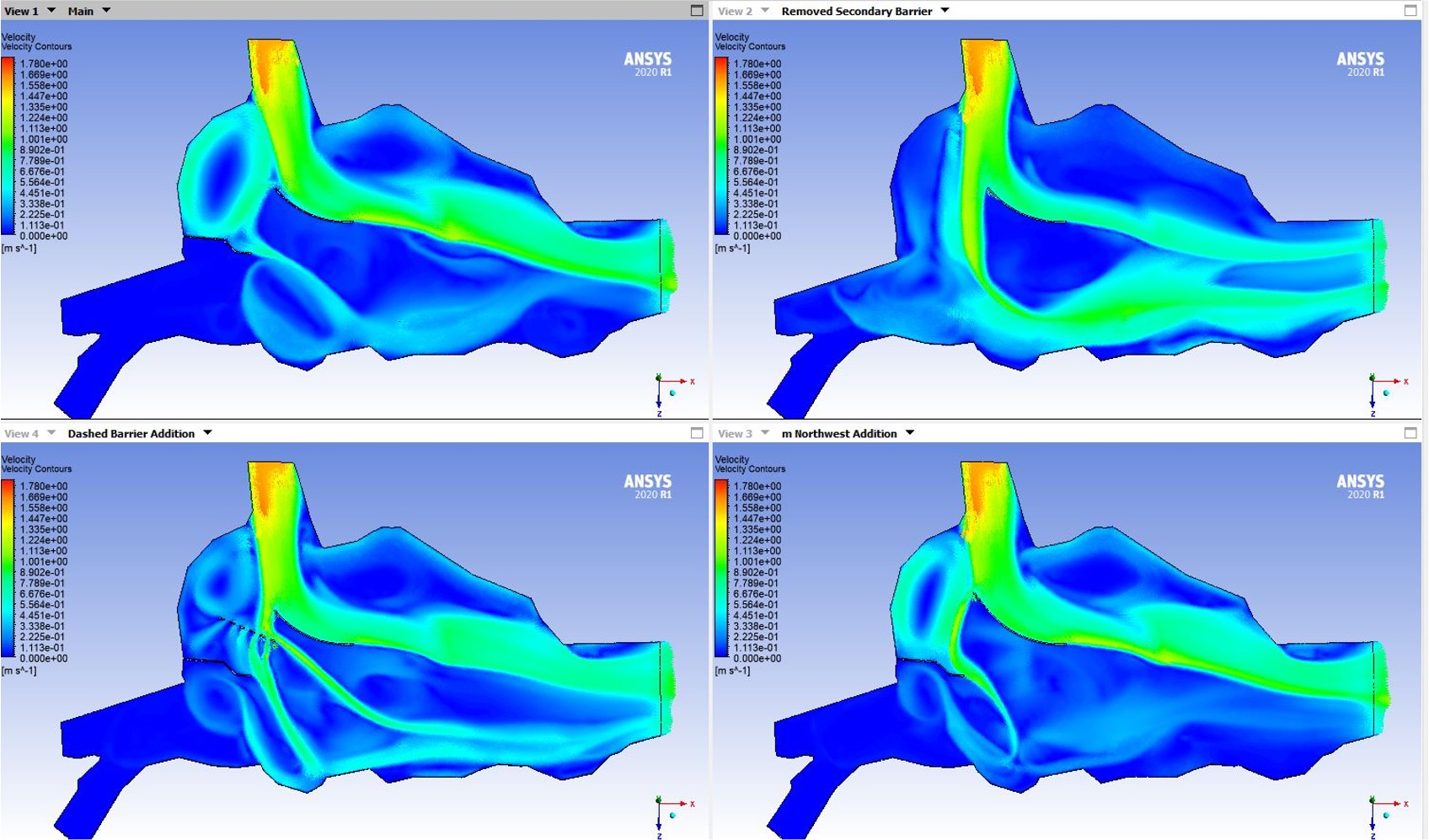CFD Analysis of Cross Currents on the St. Lawrence River
In recent years, Lake Ontario water levels have been rising, affecting communities all around the lake with widespread flooding. The simplest method to lower this level is by allowing a greater output of water through the St. Lawrence River, which is the primary outlet of the lake. This increase in flow rate increases the force of cross currents, which occur where the geometry of the riverbed redirects flow perpendicular to the run of the river. These currents are dangerous for commercial ships to navigate.
In order to significantly reduce the water level of Lake Ontario, the flowrate of water will need to be increased by ~500 m3/s[2]. However, if the velocity exceeds 1.22 m/s, ships can no longer safely maneuver into the locks[3], which are frequently near points of high cross current impact. Figure 1 shows one of these locations, known as Polly’s Gut. This region already has two barriers in place to redirect currents, but their effectiveness at higher flow rates has not been modeled.
By modeling Polly’s Gut using Computational Fluid Dynamics (CFD), the effectiveness of the current mechanism may be assessed and compared with other alternative geometries. If the river flow can be redirected in these areas so that the safe passage of ships is maintained, the flowrate of the river could be raised, allowing the lake level to be lowered.

